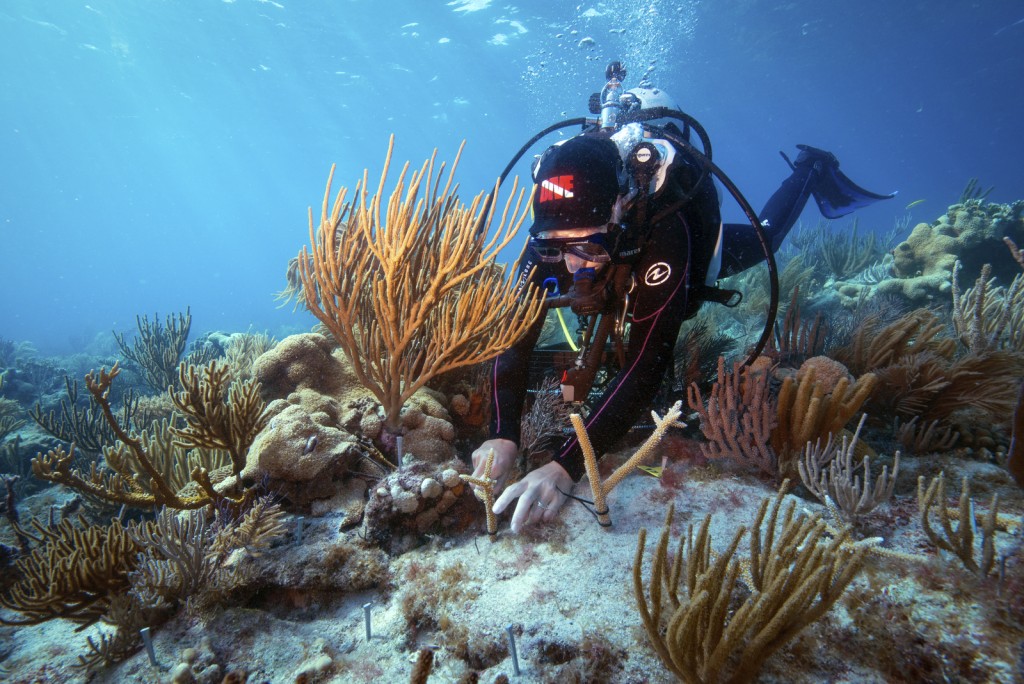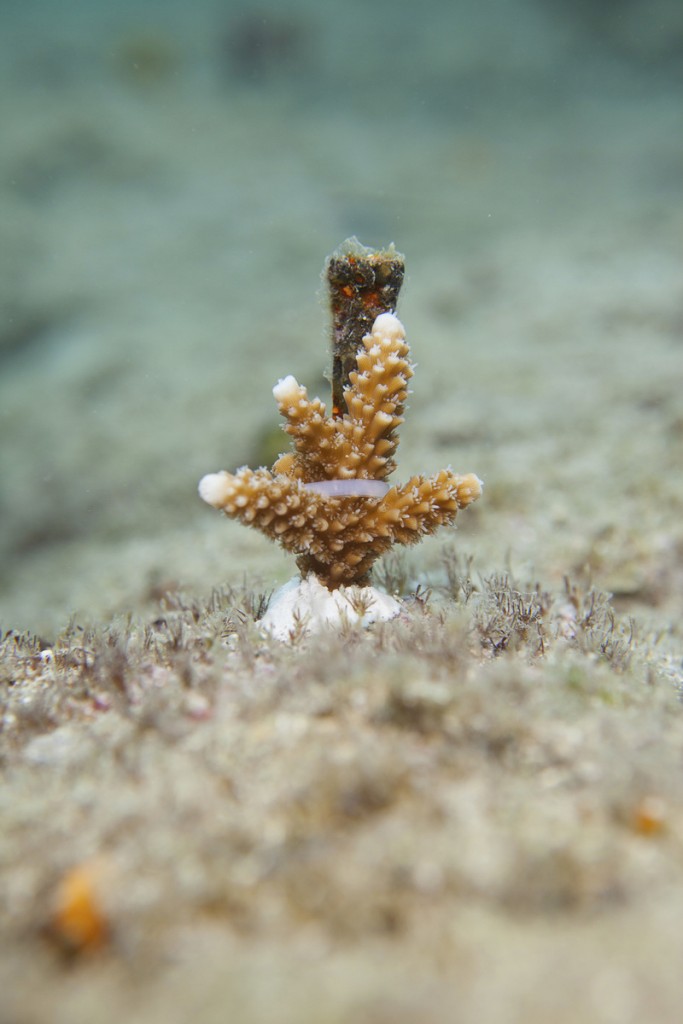Outplanting
The outplanting phase is a crucial step in coral gardening efforts, where corals are transported from nurseries and secured back onto reef habitats.

Outplanting staghorn coral in Dry Tortugas National Park. Photo © Carlton Ward
Outplanting also can be the most expensive and labor-intensive part of coral restoration efforts due to long hours and many people needed using SCUBA and boats. Therefore, this phase should be undertaken with thoughtful planning to minimize the loss of nursery-reared corals. Important considerations to maximize outplanting success include:
Outplanting Site Selection
Site selection is one of the most important components of a coral reef restoration program.
Factors to consider for outplanting sites include:
- Site conditions (e.g., water quality, human activity, abundance of coral predators, diseased corals)
- Local presence of coral species being outplanted
- Wave energy conditions
- Accessibility from the nursery site
- Ease of outplanting
Acclimation
Depending on the nursery location (e.g., land-based nurseries), corals may need a period of acclimation before outplanting in the wild. Acclimation may involve corals adjusting to the lighting, temperature, or turbidity of the outplant site.
Transporting Corals
When transporting corals from the nursery to the outplant site, reducing stress to the corals is of utmost importance. Corals should be transported during cooler and calmer times of the year, not during times of heat stress or increased storm activity.
Coral Transplant Health and Size
Corals should not be outplanted if they exhibit any abnormal conditions such as recent tissue loss, discoloration, paling/bleaching, or parasites. Because of the costs of maintaining corals in a nursery, it is best to outplant corals as soon as they are large enough to have a good chance of survival after transplantation.
Attachment Methods
Corals are outplanted by securing them to the reef using a variety of attachment methods. The attachment method should be tested and will partially be determined by the coral species being outplanted, the type of substrate at the outplant site, and site conditions. Before any attachment method is used, all fouling organisms and sediment should be cleared from the substrate using small wire brushes and scrapers.

A newly outplanted coral offshore of Ft. Lauderdale, Florida. Photo © Tim Calver
Transplant Density and Arrangement
There is no one “best” design for outplanting as it varies across locations and the types of coral species used. Using reference sites to inform outplanting design is always important. Piloting various density and spacing arrangements will also help spread the risk and determine the most suited design.
Genetic Considerations
The genotype of outplanted corals is a critical consideration for the recovery of wild populations as it increases the potential for cross-fertilization and the creation of genetically unique individuals. Thus, it’s important to outplant a mixture of genotypes whenever possible.
